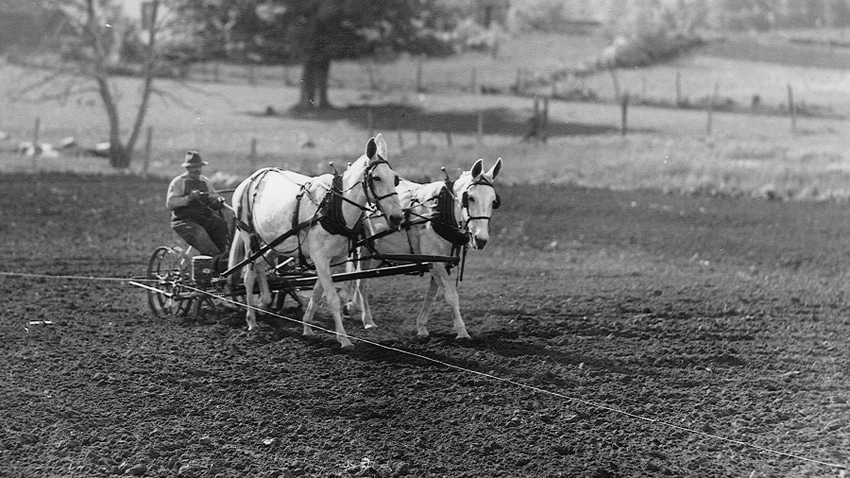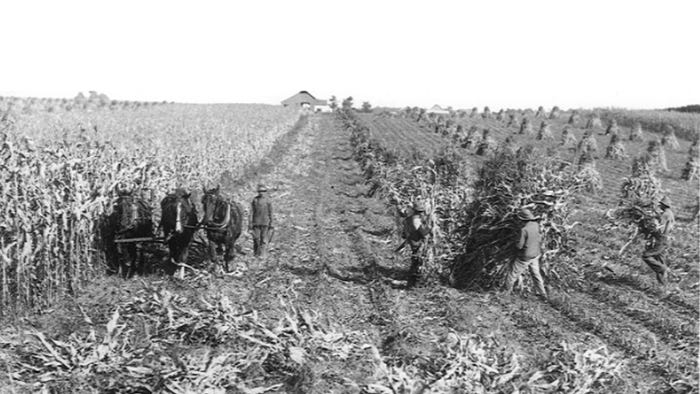
If you could crawl inside this black-and-white photo, what stories could you learn and tell?
“My current book project revolves around the transition from horses to tractors,” says Fred Whitford, director of Purdue Pesticide Programs and author of several books about the early history of Purdue and Purdue Extension. “I want to learn as much as I can about what is was like to farm with horses.”
Here is your new challenge. Either from memory or based on stories you’ve heard from relatives, what was it like to farm in the era depicted in this photo? What was it like planting then vs. planting now?
Give us your best description. Send it to [email protected] or mail to 599 N. 100 W., Franklin, IN 46131. Include your mailing address. Whitford will select the most accurate, inspiring description, and the writer will receive a copy of his book “Enriching the Farm Family,” available from Purdue University Press.
1st photo explanation
The photo below of horses pulling an unknown tool in a cornfield generated dozens of responses from nearly a dozen states. Whitford wanted to know what the farmers were doing and what tool they were pulling, and many people had varying ideas.

MYSTERY PHOTO: Here is the photo that started this old-time farming hoopla. Dozens of readers and viewers offered possible explanations. See below for the most trusted answers.
Thanks to everyone who took time to email, write or call with your insights. After doing some investigating of his own, guided by the responses as they came in, Whitford narrowed down what was likely occurring.
Here are the two responses that he believes best explains the scene. Yes, there is still room for debate.
From Mike Copeland, Greenwood, Ind. “They are using a horse-drawn corn cutter. It’s a simple blade attached to a cart. The blade folds down and cuts corn at ground level at a 45-degree angle. There were no moving parts at all.
“The blade is wood with a steel leading edge. I have seen one in an old barn. I am told that some had two blades to cut two rows at once. This one looks like one blade.”
From Gerald Gauck, Milan, Ind. “Mine had a long tongue on it pulled by horses. I cut the tongue off shorter so I could pull it with my Allis-Chalmers C. Mine also had a bundle carrier so you could hold several bundles and drop them where you wanted the shock. You can see in the picture they are tripping the bundles in the same place so they can shock the corn.
“You left corn in shocks until November, then took it to the barn to run through the corn shredder. I still have my four-row Rosenthal in the barn, and it works. Back then, I milked 12 cows by hand, shocked 40 shocks of corn, cut down enough for 40 shocks the next day, then milked again.”
Both Copeland and Gauck will receive one of Whitford’s books.
About the Author(s)
You May Also Like




